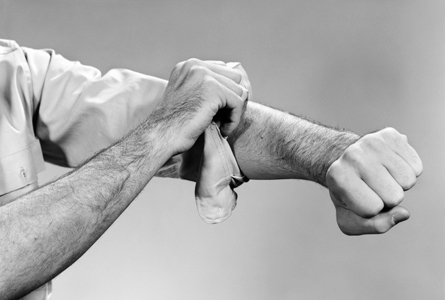
When Executives Go Rogue — It’s Too Late to Point Fingers
November 26, 2018
If Internal Audit Is Not Making an Impact, Roll Up Your Sleeves
December 12, 2018Good governance is part art, part science, and probably a bit of luck and magic. But the payoff when it is achieved is an organization that consistently achieves goals, serves stakeholder interests, supports long-term value creation, and nurtures a healthy culture.
The problem is that there can be no one-size-fits-all approach. Each organization faces unique risks, challenges, and opportunities that add variability to the struggle. But the importance of finding the right combination of rules, practices, controls, structures, and processes that support good governance is worth the effort. Not surprisingly, many tools and models have been developed over the years to explain or promote best practices that position organizations to succeed.
One model that has gained widespread acceptance and popularity is the Three Lines of Defense. Over more than two decades, myriad organizations have embraced the model, attracted by its simplicity in describing risk-management and control responsibilities in three separate “lines” — one that owns and manages risks (first line), one that supports risk management (second line), and one that provides independent audit assurance and insight (third line).
Many believe that The IIA invented the Three Lines of Defense model. While the precise origins of the model are subject to debate, The IIA did not originate it. In 2013, The IIA did publish a position paper in support of the model, in part because of its strong recognition of internal audit’s vital third-line role as an independent assurance provider.
However, in recent years, critics have charged that the model’s fixed “lines” make it too inflexible for today’s dynamic governance challenges and that its focus on defense limits its effectiveness. Today’s complex risk landscapes continually evolve, and rapid advances in technology offer both disruptions and opportunities. What’s more, as organizations have developed new approaches to address risks, the “lines” have become less distinct with first-, second- and third-line responsibilities often overlapping.
In addition to concerns about the blurring of the lines of defense, others have noted that the Three Lines of Defense model is all about “protecting value,” and doesn’t really address the importance of value enhancement. The IIA’s new strategic plan stresses that internal audit “be recognized as critical to enhancing and protecting organizational value.” For this to happen, internal audit must be portrayed as more than just a third line of protecting value.
The time has come to take a new look at the Three Lines of Defense and give this trusted instrument a 21stcentury makeover. Buoyed by the support of governance experts in the public and private sectors, academia, regulators, and representatives of the Big Four accounting firms, The IIA has embarked on a project to refresh the model.
As IIA Chairman of the Board Naohiro Mouri said in the press release announcing the ambitious project:
“Our aim is not to replace Three Lines of Defense or invent a new model, but to ensure it can accommodate the nuances and dynamics we see across different organizations, so that they may leverage and learn from each other more effectively and strategically.
“We also must embrace the concept that risk goes beyond defense. Uncertainty creates risks and it creates opportunities. Consideration must be given to both sides in decision making and planning at all levels. Organizations must decide the most appropriate way to allocate and structure resources and responsibilities within their organizations, using the Three Lines of Defense to their advantage.”
This yearlong project is headed by a core working group of governance experts who will tap into the vast experiences of an additional 30-member advisory group. The project includes a comprehensive review of governance approaches from around the world, and it will seek out and incorporate public comments through a formal exposure process. Ultimately, the project will result in a new IIA position paper on the subject, expected in the second half of 2019.
From the outset, The IIA’s objective has been to explore how best to update the Three Lines of Defense model to reflect the changes in modern risk management and governance, while at the same time preserving its straightforward and clear approach. In keeping with its original intent, the refresh will focus on roles not organizational structures. In response to critiques, the aim is make the model more flexible, suitable to all sectors, and responsive to both the challenges and opportunities that risks offer. Like many of you, I eagerly await the result of the work from what is a world-class group of governance experts and a thorough and inclusive process.
My intent in sharing news of The IIA’s Three Lines of Defense initiative is to inform you about this important project and to build momentum for a lively and productive consideration of the exposure draft, which is anticipated early next year.
The original model has served many organizations well for many years. My sincere hope is that the refreshed version will do so, as well.




I welcome your comments via LinkedIn or Twitter (@rfchambers).